15 Stunning Plants for a Colorful Garden That Aren’t Flowers
If you love adding color to your garden but want to avoid flowers, there are plenty of vibrant plants to choose from. These plants bring rich hues to your outdoor space through their foliage, creating stunning visual appeal year-round. From bold, leafy vegetables to unique shrubs and trees, colorful plants can enhance any garden setting. Many of these plants are easy to care for and require little maintenance, making them perfect for both beginners and seasoned gardeners. Whether you want deep reds, bright oranges, or soft purples, there’s a colorful plant to match your garden’s vibe. These plants can thrive in various conditions, including sun or shade, giving you plenty of flexibility. Let’s explore some of the best colorful plants that are sure to bring life and beauty to your garden without the need for flowers.
This post may contain affiliate links, which helps keep this content free. Please read our disclosure for more info.
Japanese Maple (Acer palmatum)

Japanese maples are known for their beautiful foliage that comes in a variety of colors, from deep red to golden yellow. These trees are ideal for adding color to your garden throughout the year. In spring and summer, the leaves offer shades of green or red, while in fall, they transform into brilliant shades of red, orange, and purple. Their delicate branches and fine-textured leaves also add visual interest even when the tree is bare in the winter.
Japanese maples thrive in partial to full shade, making them perfect for areas of your garden that do not receive full sunlight. These trees are relatively slow-growing and stay compact, which makes them suitable for smaller gardens. They require well-drained soil and a moderate amount of water to remain healthy and colorful throughout the seasons.
Red-leafed Heuchera (Coral Bells)
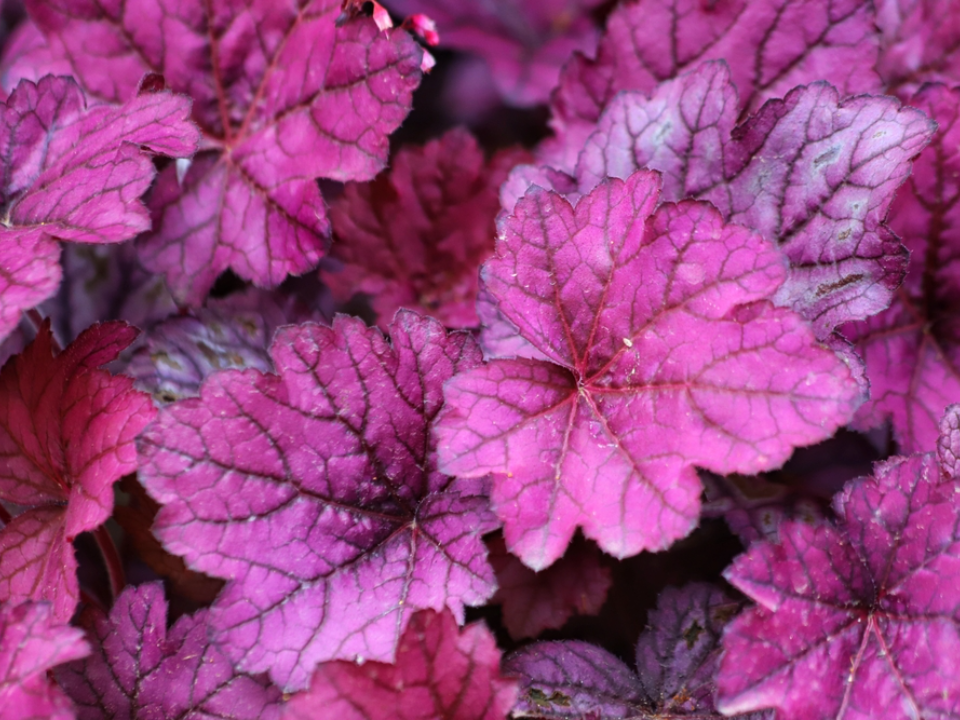
Red-leafed Heuchera, or coral bells, are known for their striking foliage in various shades of red, purple, and bronze. The leaves often have a shiny texture that adds an elegant touch to any garden. While this plant does produce small flowers, it is mainly grown for its vivid and colorful foliage, which stays vibrant throughout much of the year. In colder climates, the plant’s leaves tend to deepen in color during the winter months.
Heuchera thrives in partially shaded areas and can handle a variety of soil types as long as they are well-drained. The plant is relatively low-maintenance and only requires occasional watering, especially during dry periods. This makes it an excellent choice for gardeners looking for color without a lot of effort.
Coleus (Plectranthus scutellarioides)
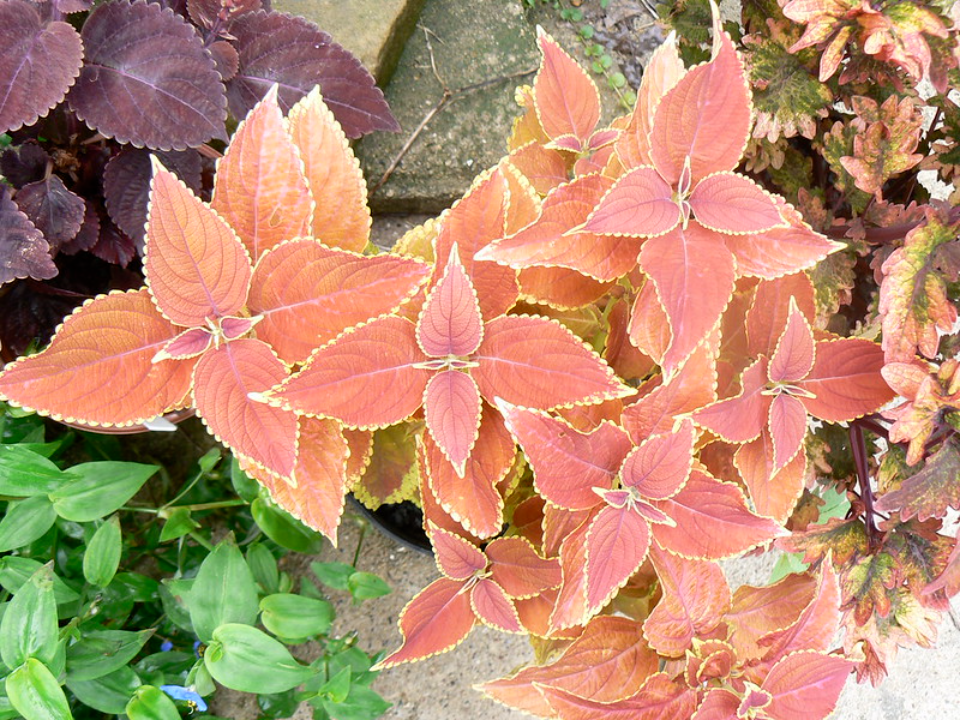
Coleus plants are known for their vibrant and multicolored leaves. These leaves come in various combinations of red, green, purple, yellow, and orange, making Coleus an excellent addition to brighten up any garden space. The colors of the foliage can vary depending on the variety and the sunlight it receives. Some varieties feature a mix of contrasting colors that can complement other plants in your garden.
Coleus thrives in both sun and shade, though it tends to produce the most colorful foliage in shadier areas. These plants are perfect for containers or as ground cover. They are easy to maintain, requiring only regular watering and occasional pruning to keep their shape. Coleus can also tolerate a range of soil conditions, making it adaptable to various garden environments.
Smokebush (Cotinus coggygria)
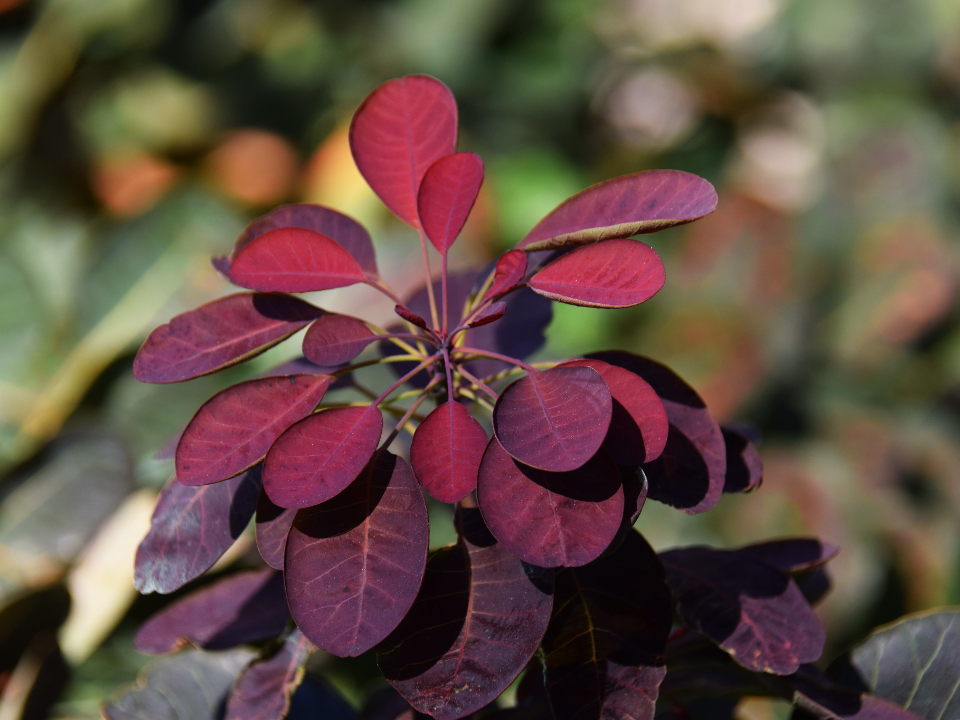
Smokebush is a unique shrub known for its colorful foliage and cloud-like flower clusters. In spring and summer, the leaves of the Smokebush can range from green to purple, with some varieties producing red or orange foliage in the fall. The plant also produces puffy, smoke-like blooms that add another layer of texture to the garden. These wispy flowers create an ethereal effect, enhancing the plant’s overall visual appeal.
Smokebush thrives in full sun and requires well-drained soil. It is relatively easy to grow and can tolerate a variety of conditions, including dry spells. Smokebush can grow quite large, making it an excellent choice for creating a focal point in your garden.
Beets (Beta vulgaris)

Beets are often grown for their edible roots, but the colorful foliage can be a striking addition to any garden as well. The leaves range in color from deep green to vibrant red, making them a standout plant in any garden bed. Beet greens are highly nutritious and can be used in salads or sautéed dishes, offering both a decorative and practical function in your garden.
Beets prefer well-drained, loamy soil and need a good amount of sunlight to thrive. These plants are relatively easy to grow and require regular watering, especially during dry spells. Beets are versatile and can be grown in both raised beds and containers, making them an excellent option for various garden setups.
Variegated Ginger (Costus spp.)
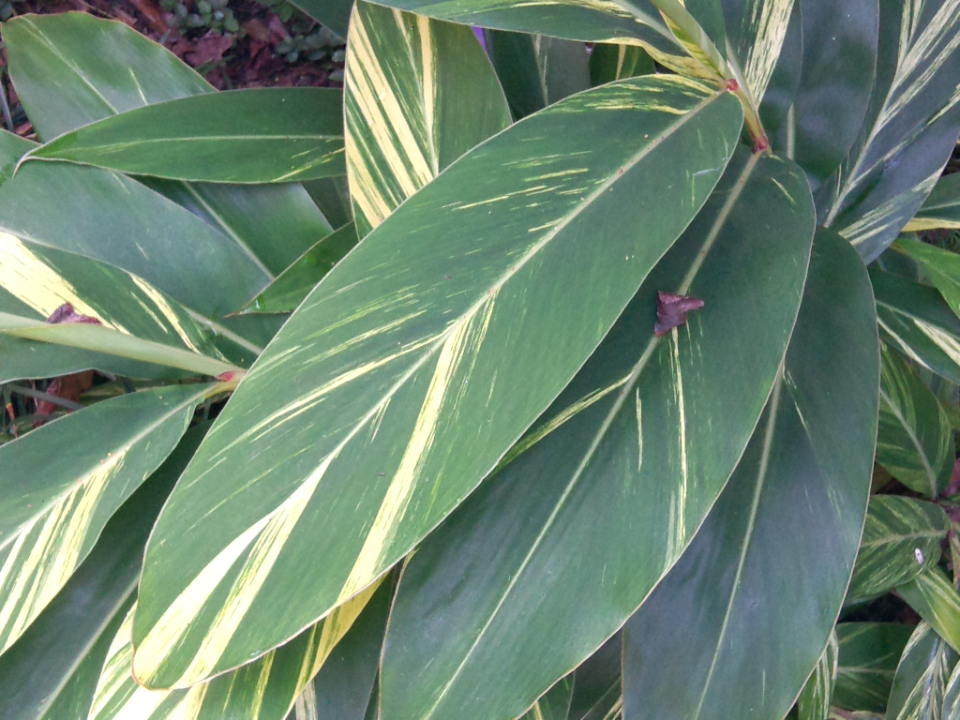
Variegated ginger features bold foliage with colorful patterns of green, yellow, and white. This plant stands out with its striking, sword-shaped leaves, and it can add an exotic touch to your garden. Variegated ginger is typically grown for its colorful foliage, although it can also produce small flowers that resemble traditional ginger blooms.
This plant prefers moist, well-drained soil and partial to full shade. It thrives in tropical and subtropical climates, making it ideal for gardens in warmer areas. Variegated ginger needs regular watering to keep the soil moist, but it can tolerate some drought once established. It is perfect for shaded corners where you want to add a pop of color.
Purple Sweet Potato Vine (Ipomoea batatas)
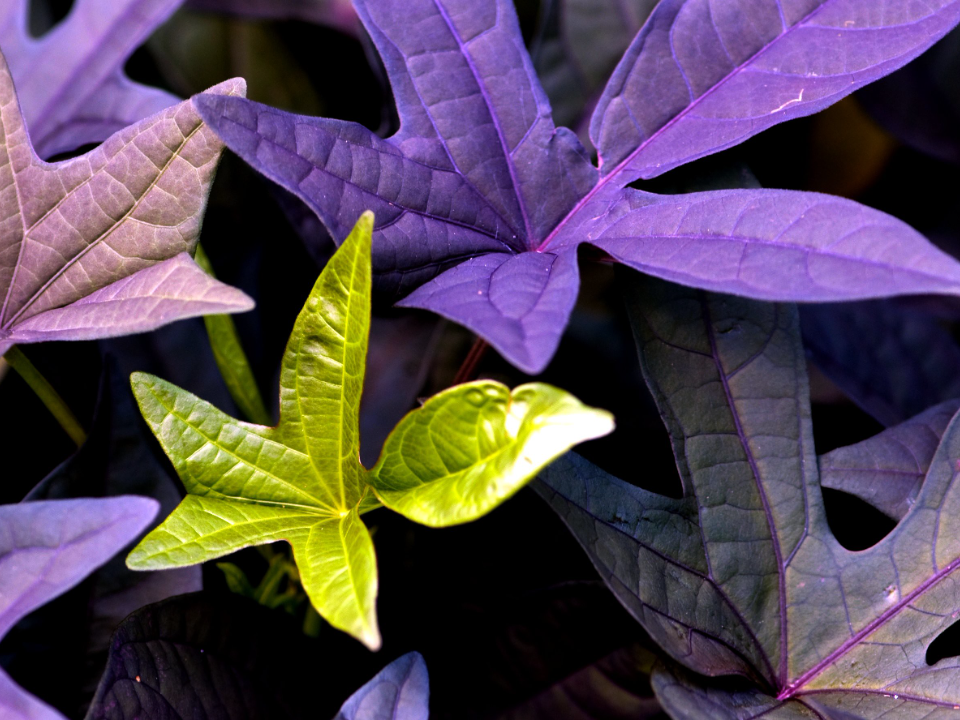
The purple sweet potato vine is known for its vibrant purple foliage that adds color to any garden. This vine grows quickly and can be used as ground cover or in hanging baskets. Its heart-shaped leaves are striking, especially when paired with other plants in your garden. The color of the leaves deepens with more sunlight, making this plant ideal for sunny spots.
Sweet potato vines are easy to grow and prefer well-drained, moist soil. They require regular watering, especially during dry periods, and thrive in full sunlight. In addition to their beautiful color, the vines can also produce edible sweet potatoes if left to grow long enough in the right conditions.
Elephant Ears (Colocasia spp.)

Elephant ears are tropical plants that are known for their large, dramatic leaves that come in various shades of green, purple, and even black. These plants can create a striking focal point in the garden, especially when planted near a water feature or in a shaded spot. The bold foliage stands out against other plants, making it perfect for adding texture and color to any landscape.
Elephant ears thrive in moist, well-drained soil and prefer partial to full shade. They need regular watering to keep the soil consistently moist, especially during hot weather. These plants can grow quite large, making them ideal for larger garden spaces where they can spread out.
Ornamental Kale (Brassica oleracea)
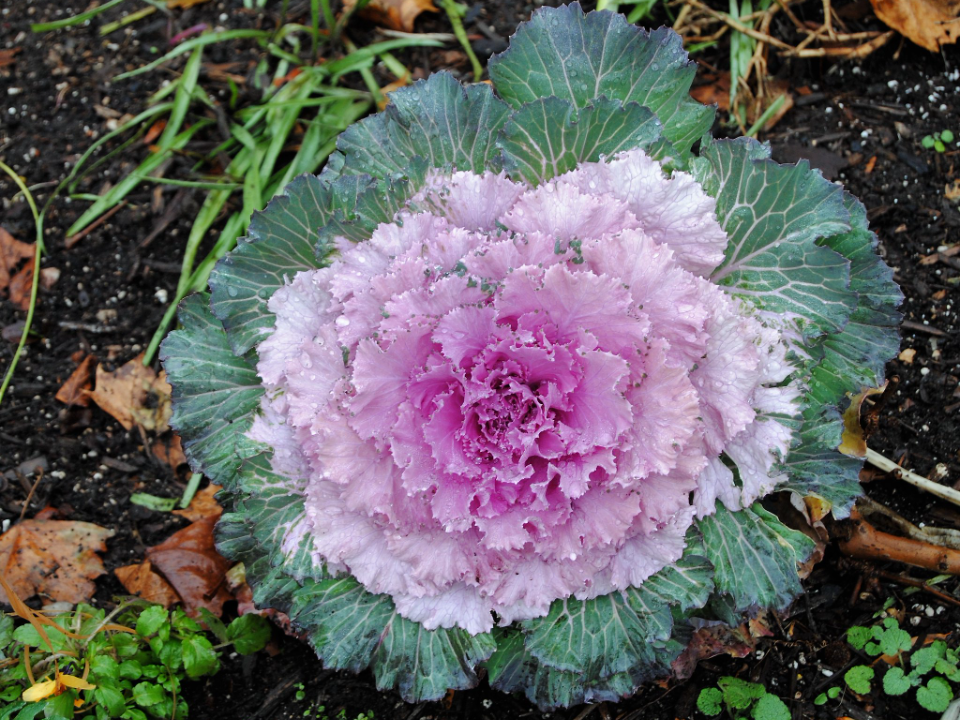
Ornamental kale is grown for its colorful, frilly leaves that come in shades of purple, pink, and white. Unlike the edible varieties of kale, ornamental kale is used primarily for its decorative appearance. The bright, colorful leaves create a beautiful contrast in garden beds, especially during the cooler months.
This plant thrives in cool temperatures and prefers well-drained, slightly acidic soil. It grows best in full sunlight but can also tolerate some light shade. Ornamental kale is relatively low-maintenance and only needs regular watering to keep the soil moist.
Heucherella (Heucherella spp.)
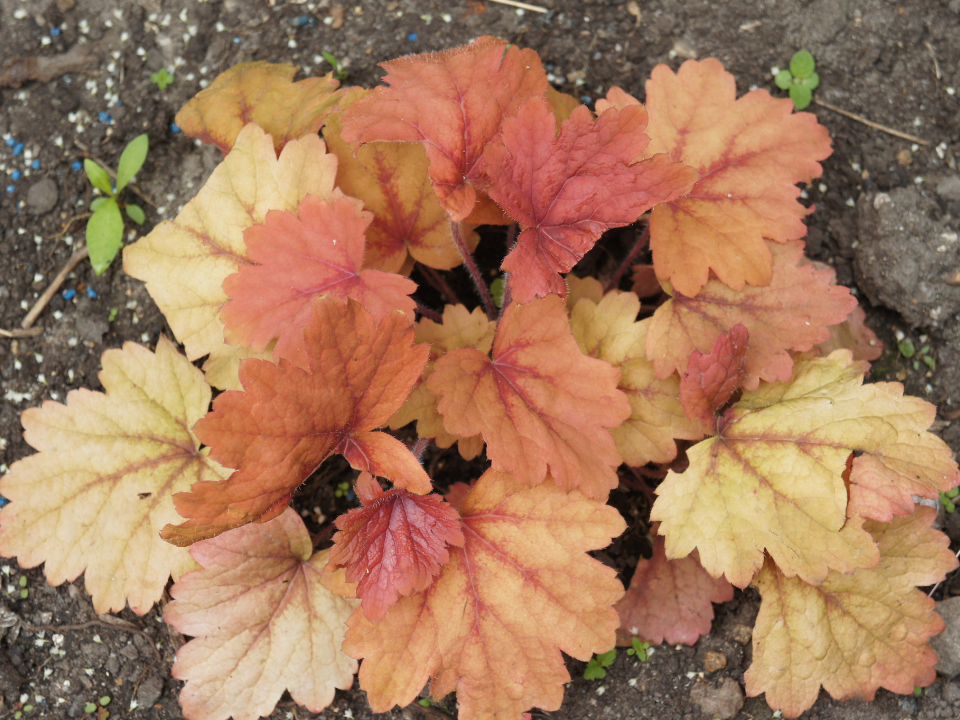
Heucherella is a hybrid plant that combines the best traits of Heuchera and Tiarella, producing vibrant foliage in shades of gold, orange, red, and purple. The leaves often have a marbled or veined pattern that adds complexity and beauty to your garden. Heucherella can also produce small flowers, but it is mainly grown for its colorful leaves.
This plant thrives in partial to full shade and prefers well-drained soil. It is relatively easy to care for, requiring only occasional watering to keep the soil moist. Heucherella is perfect for shaded corners in the garden, where its colorful foliage can provide interest without needing direct sunlight.
Rainbow Swiss Chard (Beta vulgaris)

Rainbow Swiss chard is another colorful vegetable plant that adds both beauty and function to your garden. The bright, colorful stems in shades of red, orange, yellow, and pink create a visually striking contrast against the deep green leaves. The plant can be used for cooking, with the stems often sautéed or used in soups.
Rainbow Swiss chard prefers well-drained soil that is rich in organic matter and grows best in full sunlight. It requires regular watering, especially during dry spells, to keep the soil moist. These plants are easy to grow and can thrive in garden beds or containers, making them a versatile choice for various garden setups.
Japanese Painted Ferns
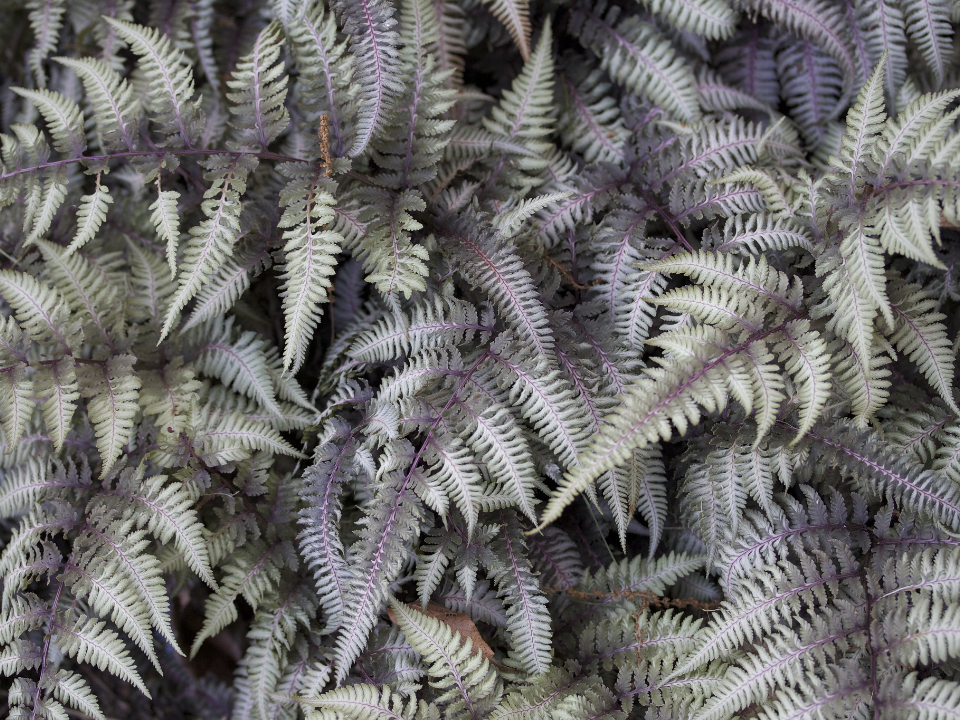
Ferns are a great way to add lush, vibrant green foliage to your garden. Certain varieties, like the Japanese painted fern, have colorful shades of purple, red, or silver along with their typical green fronds. Ferns work well in shaded areas where other plants might struggle, adding a unique texture to the garden.
Ferns thrive in moist, well-drained soil and prefer partial to full shade. They are relatively low-maintenance and do not require much attention once established. Ferns can grow in a variety of environments, from woodland gardens to hanging baskets, making them a versatile addition to any garden.
Lamb’s Ear (Stachys byzantina)
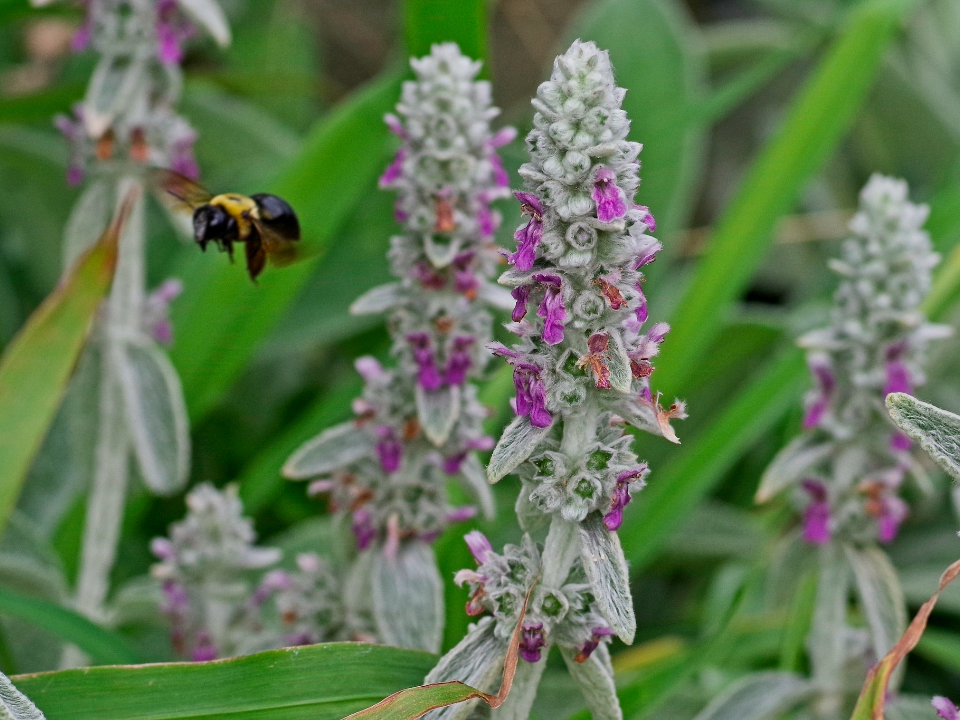
Lamb’s ear is a soft, silvery perennial that can add a unique touch of color and texture to your garden. The silvery-gray leaves are velvety to the touch and can create a calming, muted look when planted alongside brighter plants. While the plant does produce small purple flowers, it is mainly valued for its interesting foliage.
Lamb’s ear thrives in well-drained, slightly sandy soil and prefers full sunlight. It is drought-tolerant and requires little maintenance, making it an excellent choice for low-water gardens. The soft, woolly texture of the leaves also makes this plant a great option for sensory gardens.
Croton (Codiaeum variegatum)

Croton is a tropical shrub known for its vividly colored foliage. The leaves come in various shades of red, yellow, orange, and green, creating a dramatic contrast in your garden. Croton’s color intensity varies depending on the amount of sunlight it receives, with more vibrant colors appearing in full sunlight.
Croton prefers warm weather and well-drained soil. It thrives in sunny areas and requires regular watering, especially during hot spells. This plant is perfect for adding a tropical touch to your garden and works well in containers or as a specimen plant.
Autumn Blaze Maple (Acer × freemanii)
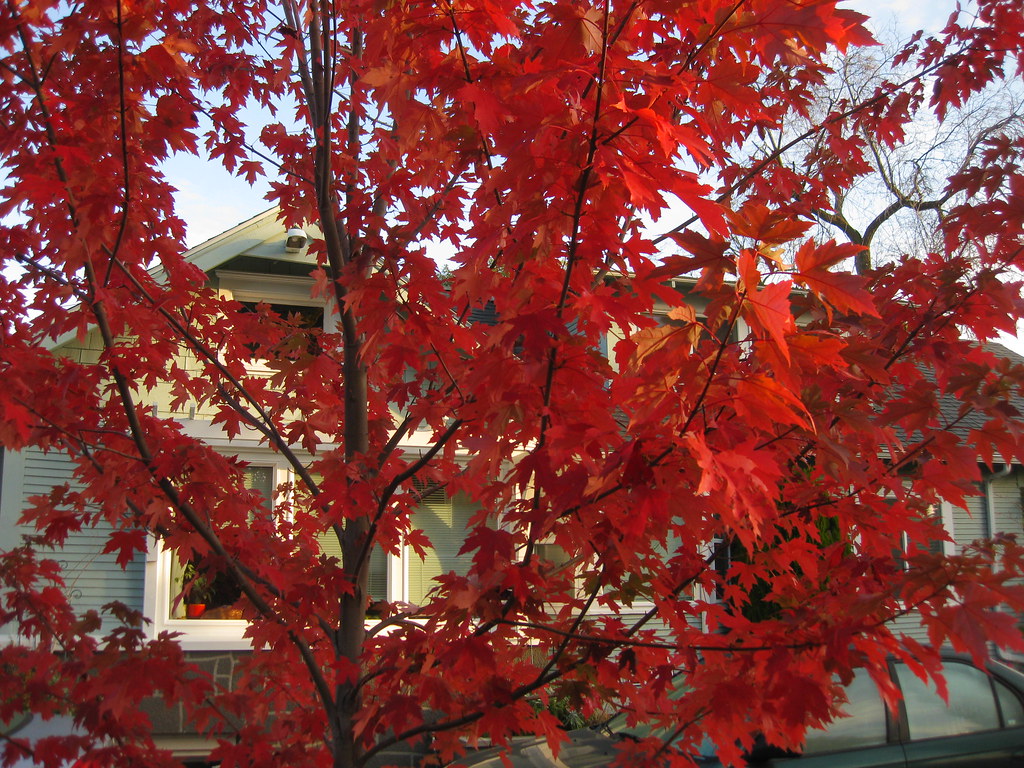
The Autumn Blaze maple is a hybrid tree known for its stunning fall color. Its leaves transition from green to bright red, orange, and yellow during autumn, creating a brilliant display of colors. The tree’s shape and vibrant foliage make it a beautiful addition to any garden, especially in the fall months.
Autumn Blaze maple prefers well-drained soil and grows best in full sunlight. It is relatively low-maintenance, requiring only occasional watering and pruning to maintain its shape. This tree can grow quite large, making it a good choice for larger gardens.
This article originally appeared on Avocadu.
